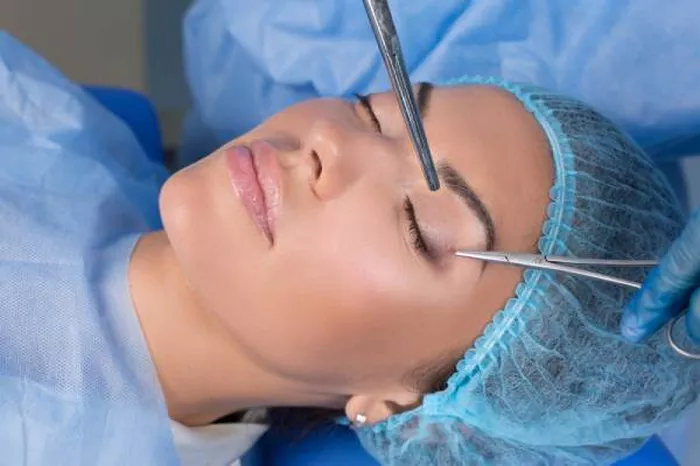Eyelid surgery, also known as blepharoplasty, is a popular cosmetic procedure performed to enhance the appearance of the eyelids and address issues such as sagging skin, puffiness, and wrinkles. While eyelid surgery is generally considered safe and effective, like any surgical procedure, it carries some potential risks and complications. It is important for individuals considering eyelid surgery to have a comprehensive understanding of these potential issues. In this article, we will explore what can go wrong with eyelid surgery and discuss the associated risks and complications.
Understanding Eyelid Surgery
Eyelid surgery can be performed on the upper eyelids, lower eyelids, or both, depending on the individual’s concerns and desired outcome. The surgery typically involves the removal of excess skin, fat, and sometimes muscle to create a more youthful and refreshed appearance. It may also address functional issues such as impaired vision caused by drooping eyelids.
Potential Risks and Complications
While eyelid surgery is generally safe, it is essential to be aware of the potential risks and complications that can occur. These can include:
- Bleeding: Excessive bleeding during or after surgery is a potential risk. The surgeon will take precautions to minimize bleeding during the procedure and provide instructions on how to manage bleeding postoperatively.
- Infection: Infections can occur after any surgical procedure, including eyelid surgery. Patients are usually prescribed antibiotics to reduce the risk of infection. It is important to follow proper postoperative care instructions to minimize the risk of infection.
- Scarring: Eyelid surgery typically involves incisions, which can result in visible scars. However, experienced surgeons place incisions in discreet locations and utilize techniques to minimize scarring. In most cases, scars fade over time and become less noticeable.
- Dry Eyes: Eyelid surgery can disrupt tear production and cause temporary or, in rare cases, permanent dryness of the eyes. This may result in discomfort, redness, and blurry vision. Lubricating eye drops or ointments can help alleviate dryness.
- Asymmetry: Achieving perfect symmetry in eyelid surgery can be challenging. While surgeons strive for balance, slight asymmetry may occur. In some cases, additional procedures or touch-ups may be necessary to address any noticeable asymmetry.
- Ectropion or Entropion: Ectropion refers to the outward turning of the eyelid, while entropion is the inward turning of the eyelid. These conditions can occur as a result of eyelid surgery but are relatively rare. Surgical correction may be required if they develop.
- Hematoma: Hematoma refers to the accumulation of blood under the skin, resulting in a localized swelling or bruising. It is a potential complication of eyelid surgery but is relatively uncommon. Proper surgical techniques and postoperative care can help minimize the risk of hematoma.
- Numbness or Sensitivity: Temporary numbness or increased sensitivity around the surgical area is common after eyelid surgery. In most cases, these sensations resolve within a few weeks or months. However, in rare cases, they may persist for an extended period.
- Unsatisfactory Results: Despite careful planning and skilled execution, the results of eyelid surgery may not meet the patient’s expectations. It is important to have realistic expectations and communicate openly with the surgeon during the consultation to ensure a shared understanding of the desired outcome.
Reducing the Risks
While risks and complications cannot be entirely eliminated, there are steps that can be taken to reduce the likelihood of complications and ensure a successful outcome:
- Choose a Qualified Surgeon: Select a board-certified plastic surgeon or oculoplastic surgeon with extensive experience in performing eyelid surgery. Research their credentials, review patient testimonials, and ask for before-and-after photos to assess their skill and expertise.
- Communication and Expectations: Clearly communicate your goals, concerns, and expectations with your surgeon during the consultation. This will help ensure that both you and the surgeon are on the same page and have a shared understanding of the desired outcome.
- Follow Preoperative and Postoperative Instructions: Adhere to the preoperative guidelines provided by your surgeon, which may include discontinuing certain medications and avoiding certain activities. Follow all postoperative care instructions diligently, including keeping the surgical area clean, using prescribed medications as directed, and attending follow-up appointments.
- Maintain Realistic Expectations: Understand that eyelid surgery can enhance your appearance, but it may not achieve absolute perfection or create a completely different look. Realistic expectations will help minimize disappointment and increase satisfaction with the results.
- Open Communication with the Surgeon: If you experience any concerns or complications after surgery, promptly communicate with your surgeon. They can provide guidance, reassurance, and appropriate interventions if necessary.
Conclusion
While eyelid surgery is generally safe and effective, it is important to be aware of the potential risks and complications associated with the procedure. Bleeding, infection, scarring, dry eyes, asymmetry, ectropion, entropion, hematoma, numbness or sensitivity, and unsatisfactory results are among the possible issues that can arise. By choosing a qualified surgeon, maintaining realistic expectations, following preoperative and postoperative instructions, and communicating openly with your surgeon, you can minimize the risks and increase the chances of a successful outcome. Remember, every surgical procedure carries some inherent risks, and being informed and proactive will help you make an informed decision about eyelid surgery.


